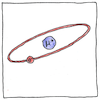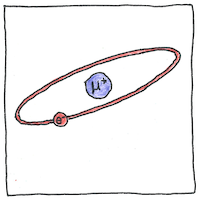Vernon W. Hughes
particle physics

|
Muonium
An electron, having a negative charge, can bond with a positively charged particle such as an antimuon, forming an exotic light isotope of hydrogen that can, for 2.2 microseconds, be studied with muon spin spectroscopy, and form chemical compounds such as muonium chloride and sodium muonide.
Other muoniums
Muonium is not to be confused with true muonium, which is a muon-antimuon pair, or with a muonic atom in which a muonium replaces an electron. The muon was first thought to be a meson and called the “mu meson.” Now, unlike the pion, the meson is known to be a lepton.
Short lives
A mayfly leads a short lifetime though any muonium would envy the mayfly if it were animate and able to envy.



Possible varieties of matter far exceed the ordinary. If exotic atoms had greater lifetimes they would seem more ordinary, and more things would be possible.
Quark, baryon, meson, hadron, gluon, lepton, boson, fermion, photon; these are categories of physical particles that make up our world. Since most of us are familiar only with the photon, here is a brief outline:
Maybe someone can think of a way to diagram these differences clearly.
See also in The book of science:
Readings in wikipedia: